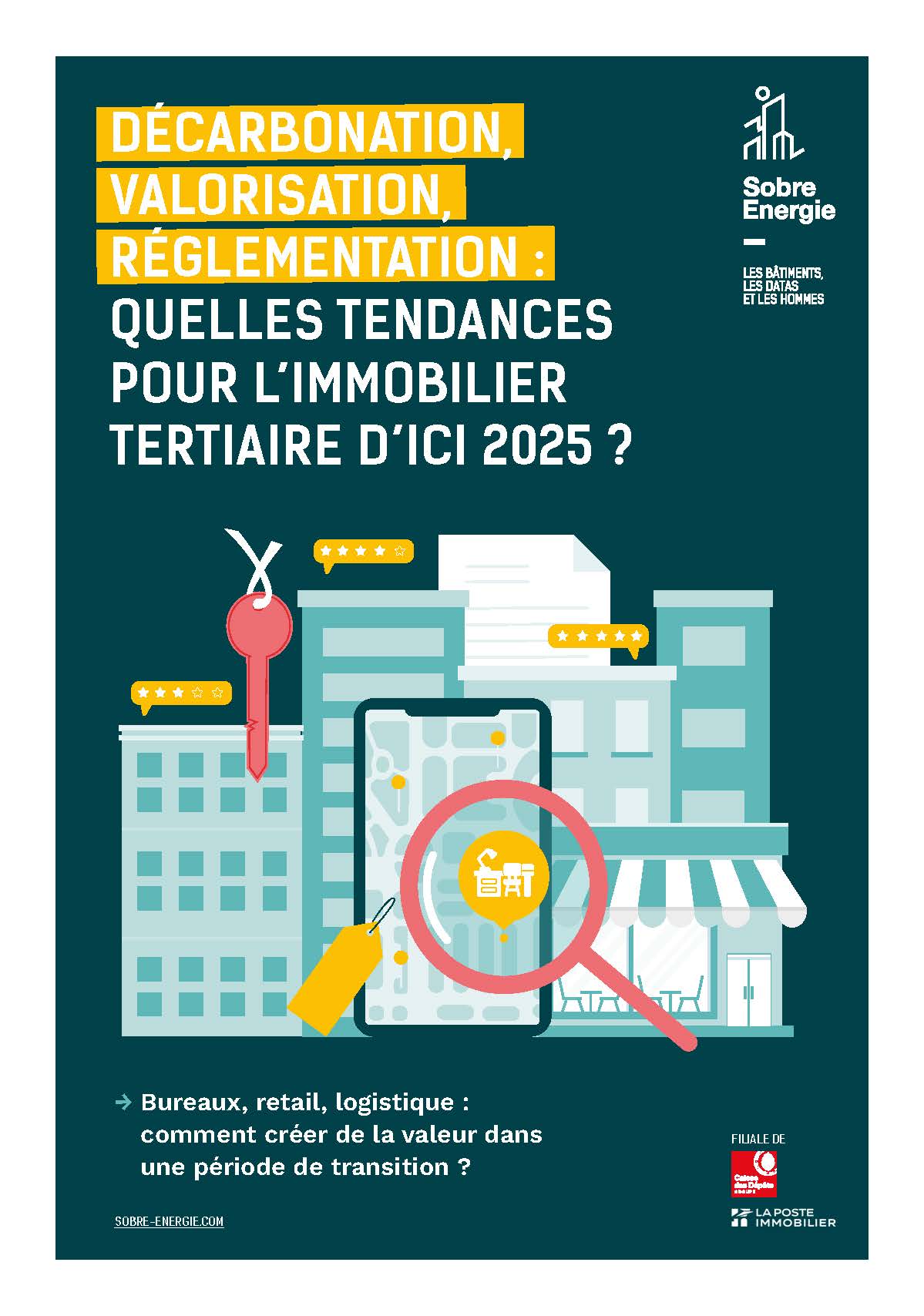The energy transformation of buildings is one of the major challenges for real estate companies and real estate managers in the years to come. The Tertiary Decree, which came into force in 2019, requires them to reduce the energy consumption of their buildings. To achieve this, the digitalization of energy efficiency management is an essential step.
Energy efficiency management, thanks to dedicated digital platforms, makes it possible to respond to these regulatory challenges while optimizing the costs and energy performance of real estate assets. These tools offer a global, real-time view of consumption, facilitating decision-making and action management.
Why now, when tertiary real estate is in crisis?
Beyond simple compliance with current (and future) regulations, the adoption of an energy transformation and sobriety approach within real estate companies and real estate asset managers generates a competitive advantage in a tense market.
First of all, it makes it possible to significantly reduce costs linked to energy consumption, thus generating savings in operating costs. In addition, by making buildings more energy efficient, this approach makes them more attractive to tenants, who are increasingly sensitive to these issues. Finally, displaying a responsible and committed image in terms of ecological transition constitutes an increasingly pronounced competitive advantage for these players, helping to strengthen their positioning and reputation on the market.
The combination of these factors (optimization of costs, comfort of occupants and societal commitment) increases the rental and sale value of an asset. This additional value, which we call “green value”, could quickly become an essential selection criterion in the tertiary sector in the same way as location. A new lever to act on returns through measured investments!
What are the key steps to implementing an effective energy efficiency strategy? How can we take advantage of digitalization to achieve these objectives? Decryption.
1. Establish a precise inventory of energy performance
Before any action, it is essential to draw up a detailed assessment of the energy consumption of the building stock. This involves the collection and analysis of reliable data on different buildings: consumption, costs, energy sources, etc.
An energy efficiency management platform (such as DATAMARC NEO, developed by Sobre Energie) makes it possible to automate this process, by centralizing all the information in a single tool. It offers an overview and facilitates the identification of the most energy-intensive positions.
2. Define an ambitious and realistic energy sobriety strategy
Based on this diagnosis, it is then possible to define a roadmap to achieve the consumption reduction objectives. This must be based on a precise action plan, prioritizing the most relevant and impactful interventions. All these elements are included in an energy audit report, like those offered by Sobre Energie.
Digitalization intervenes here to model different scenarios and simulate the impact of the planned work or the packages of actions to be carried out. This makes it possible to optimize investments and ensure that regulatory objectives are achieved.
3. Manage and monitor energy performance in real time
Once the action plan has been launched, it is essential to ensure regular monitoring in order to measure the progress made and make the necessary adjustments if necessary. In this regard, the platform plays an essential role by offering particularly effective management and monitoring functionalities.
An energy efficiency management platform, such as DATAMARC NEO for example, provides a customizable dashboard to monitor its fluids in detail and be alerted in the event of energy consumption drifts.
Thanks to this increased visibility, it becomes possible to quickly identify any deviation and implement appropriate corrective measures to further optimize energy performance.
4. Involve all stakeholders
Energy sobriety cannot be decreed, it is built with all the stakeholders involved: technical teams, tenants, suppliers, etc. It is a real change of culture that must be driven.
Here again, digitalization facilitates this collaborative dynamic. The tools make it possible to share data, manage collective action plans and actively involve all stakeholders.
In conclusion, the digitalization of energy efficiency management is an essential lever to meet the challenge of energy sobriety in tertiary real estate. It allows real estate companies and property managers to meet regulatory requirements while optimizing their energy and financial performance. What if green real estate became the new prime real estate?
Tertiary buildings: what does the new European directive change?
